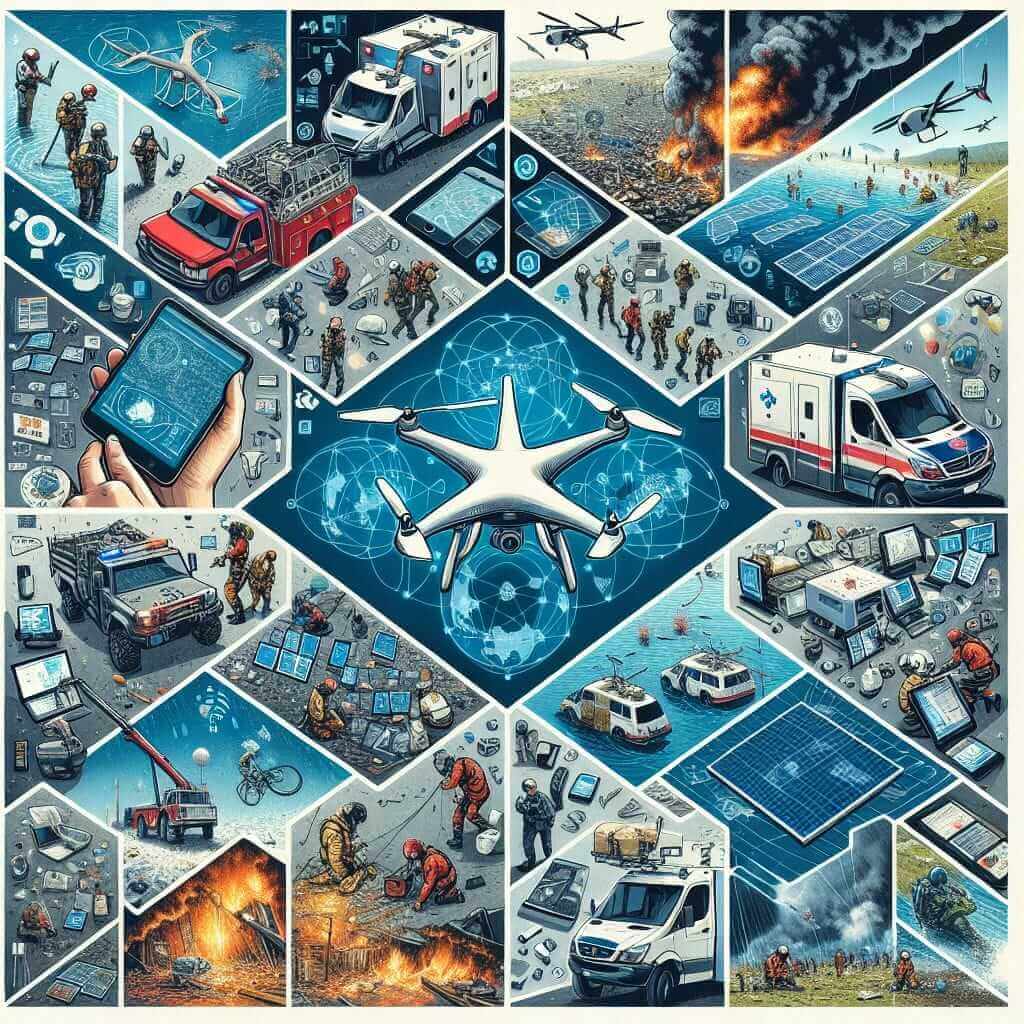The intersection of “technology” and “disaster management” is a theme frequently explored in IELTS Writing Task 2. This topic holds significant relevance in our increasingly tech-driven world, making it crucial for IELTS aspirants to grasp. Let’s delve into potential essay questions and craft a high-scoring response.
Potential IELTS Essay Questions:
- Discuss the advantages and disadvantages of using technology in disaster management.
- To what extent do you agree that technology plays a vital role in mitigating the impact of natural disasters?
- Analyze the role of technology in different stages of disaster management, from preparedness to recovery.
Crafting a Band-8 IELTS Essay
For this exercise, we’ll focus on question #2:
To what extent do you agree that technology plays a vital role in mitigating the impact of natural disasters?
Analyzing the Question
This question requires you to present a clear stance on the importance of technology in lessening the effects of natural disasters. You’ll need to provide strong arguments and examples to support your viewpoint.
Model Essay
Technology has become an indispensable tool in modern disaster management, playing a pivotal role in mitigating the devastating impacts of natural disasters. While some might argue that traditional methods remain relevant, I firmly believe that technological advancements are essential for effective disaster risk reduction and response.
One compelling argument is technology’s ability to enhance early warning systems. Sophisticated sensors, satellite imagery, and predictive modeling allow scientists to forecast potential hazards with increasing accuracy. This timely dissemination of information empowers communities to prepare in advance, evacuate vulnerable areas, and minimize casualties. For example, the widespread use of mobile phone alerts for tsunami warnings has demonstrably saved countless lives in disaster-prone regions.
Moreover, technology empowers first responders with real-time information and communication tools, facilitating efficient search and rescue operations. Drones equipped with thermal imaging cameras can locate survivors trapped under rubble, while Geographic Information Systems (GIS) enable the rapid assessment of damage and the strategic allocation of resources. The use of social media platforms for disseminating information and coordinating relief efforts further exemplifies technology’s transformative impact on disaster response.

However, it is important to acknowledge that technology is not a panacea. Challenges such as access to technology in remote areas, data privacy concerns, and the potential for system failures need to be addressed. Additionally, relying solely on technology without investing in community preparedness and resilience-building measures can be detrimental.
In conclusion, while challenges exist, the advancements in technology have undeniably revolutionized disaster management. From early warning systems to facilitating targeted relief efforts, technology plays a vital role in reducing the human and economic costs of natural disasters. A comprehensive approach that integrates technological solutions with robust community engagement and preparedness strategies will be paramount in building resilience against future disasters. (Word count: 298)
Key Considerations for Writing
- Clear Structure: Maintain a clear essay structure with an introduction, body paragraphs (with clear topic sentences), and a conclusion.
- Cohesive Devices: Use a variety of linking words and phrases (e.g., “moreover,” “however,” “for example”) to ensure smooth transitions and logical flow.
- Vocabulary Range: Showcase a wide range of vocabulary related to technology, disasters, and mitigation. Avoid repetition and aim for precision in your word choice.
- Grammatical Accuracy: Ensure grammatical accuracy throughout your essay. Pay attention to verb tenses, subject-verb agreement, and article usage.
Vocabulary Highlights
- Mitigate (verb /ˈmɪtɪɡeɪt/): To make something less severe, serious, or painful.
- Indispensable (adjective /ˌɪndɪˈspɛnsəbl/): Absolutely essential.
- Predictive modeling (noun /prɪˈdɪktɪv ˈmɒdlɪŋ/): Using data and statistics to predict future outcomes.
- Dissemination (noun /dɪˌsɛmɪˈneɪʃən/): The act of spreading something widely.
- Panacea (noun /ˌpænəˈsiːə/): A solution or remedy for all problems.
- Resilience (noun /rɪˈzɪljəns/): The ability to recover quickly from difficulties.
- Paramount (adjective /ˈpærəmaʊnt/): Of the greatest importance.
- Exemplify (verb /ɪɡˈzɛmplɪfaɪ/): To be a typical example of something.
- Detrimental (adjective /ˌdɛtrɪˈmɛntl/): Causing harm or damage.
- Robust (adjective /ˈroʊbʌst/): Strong and healthy; able to withstand difficult conditions.
Further Practice
To strengthen your understanding, explore these related themes:
- The ethical implications of using artificial intelligence in disaster response.
- The role of social media in disaster relief efforts.
- The importance of investing in disaster preparedness for developing countries.